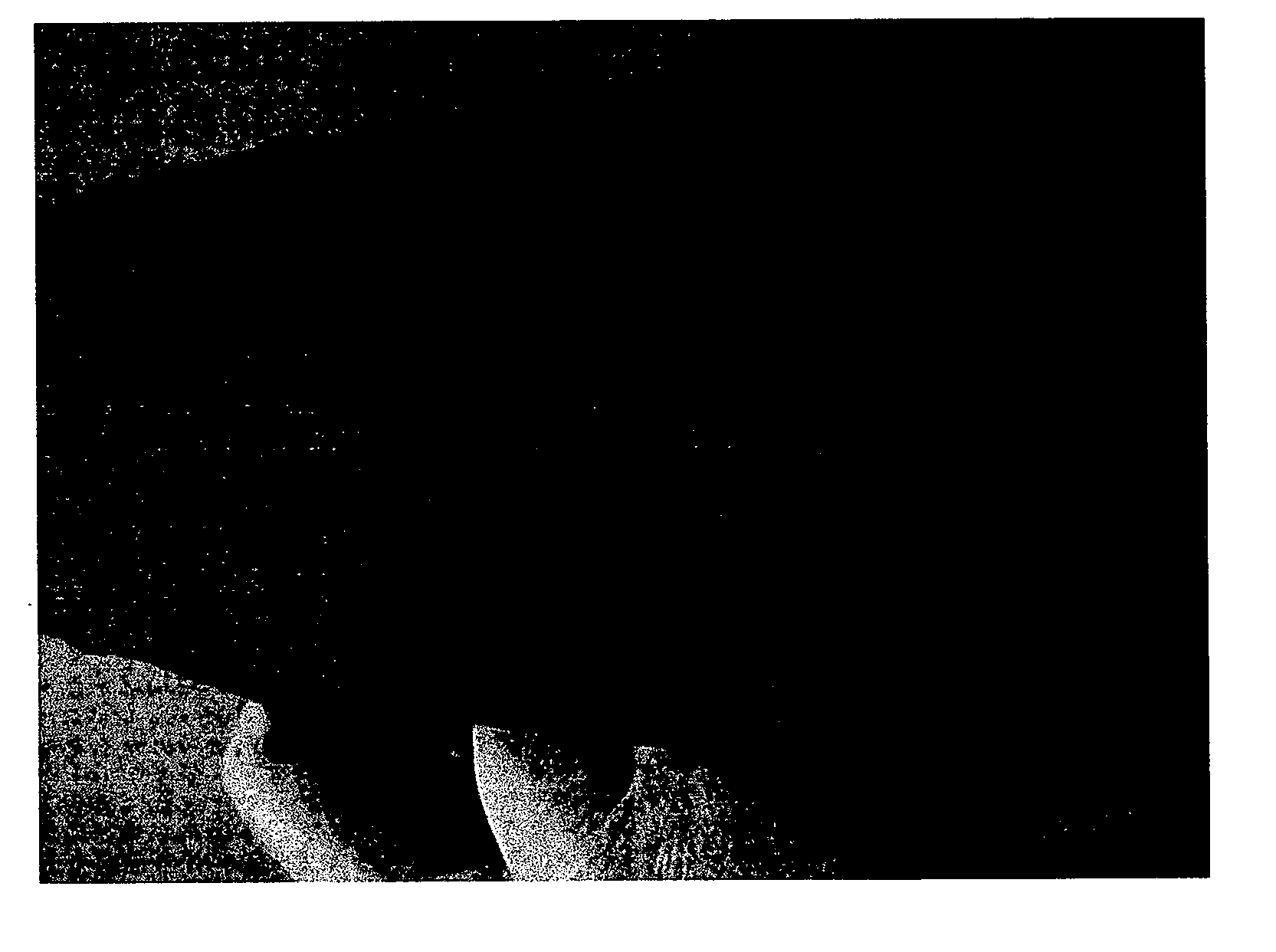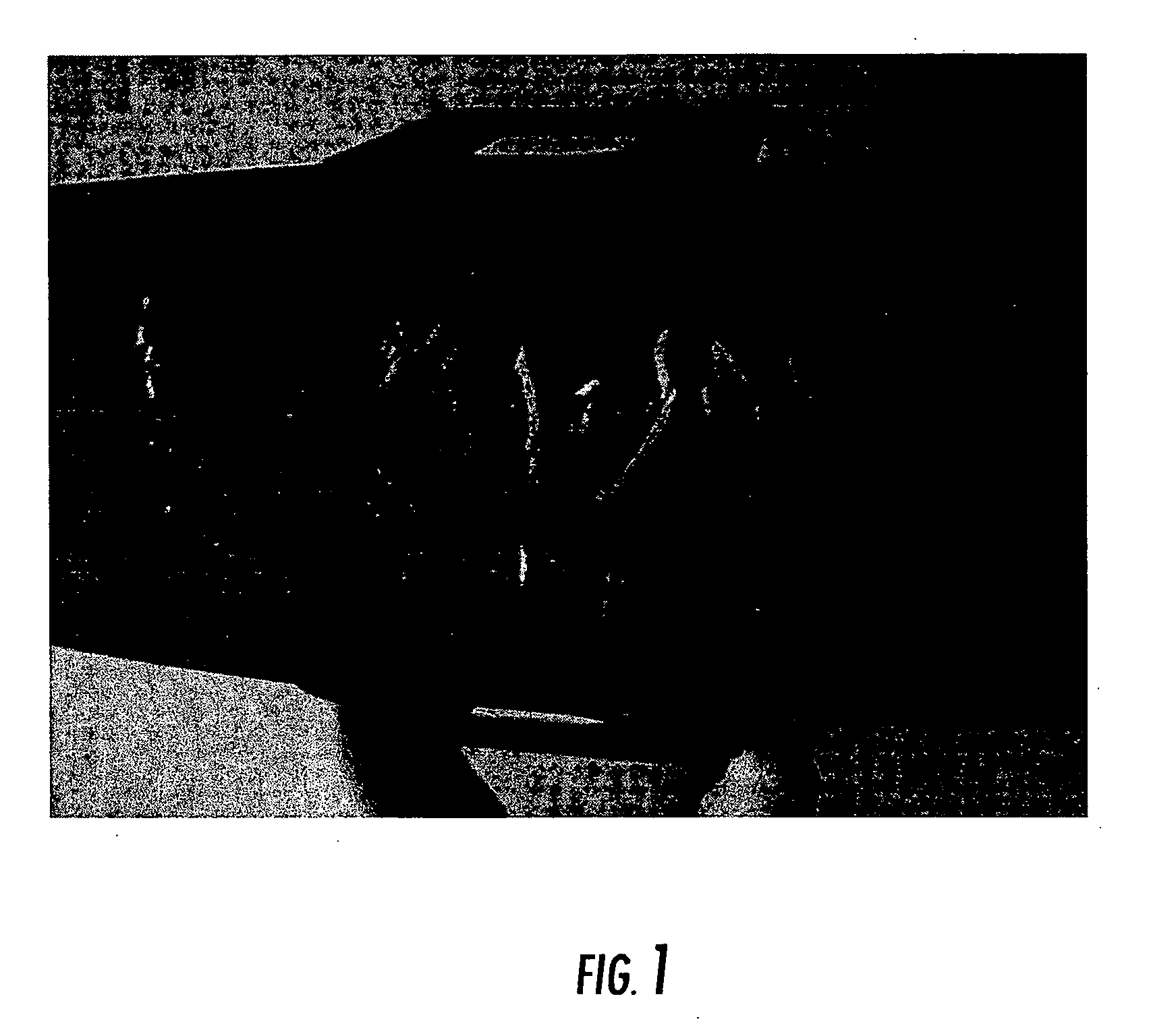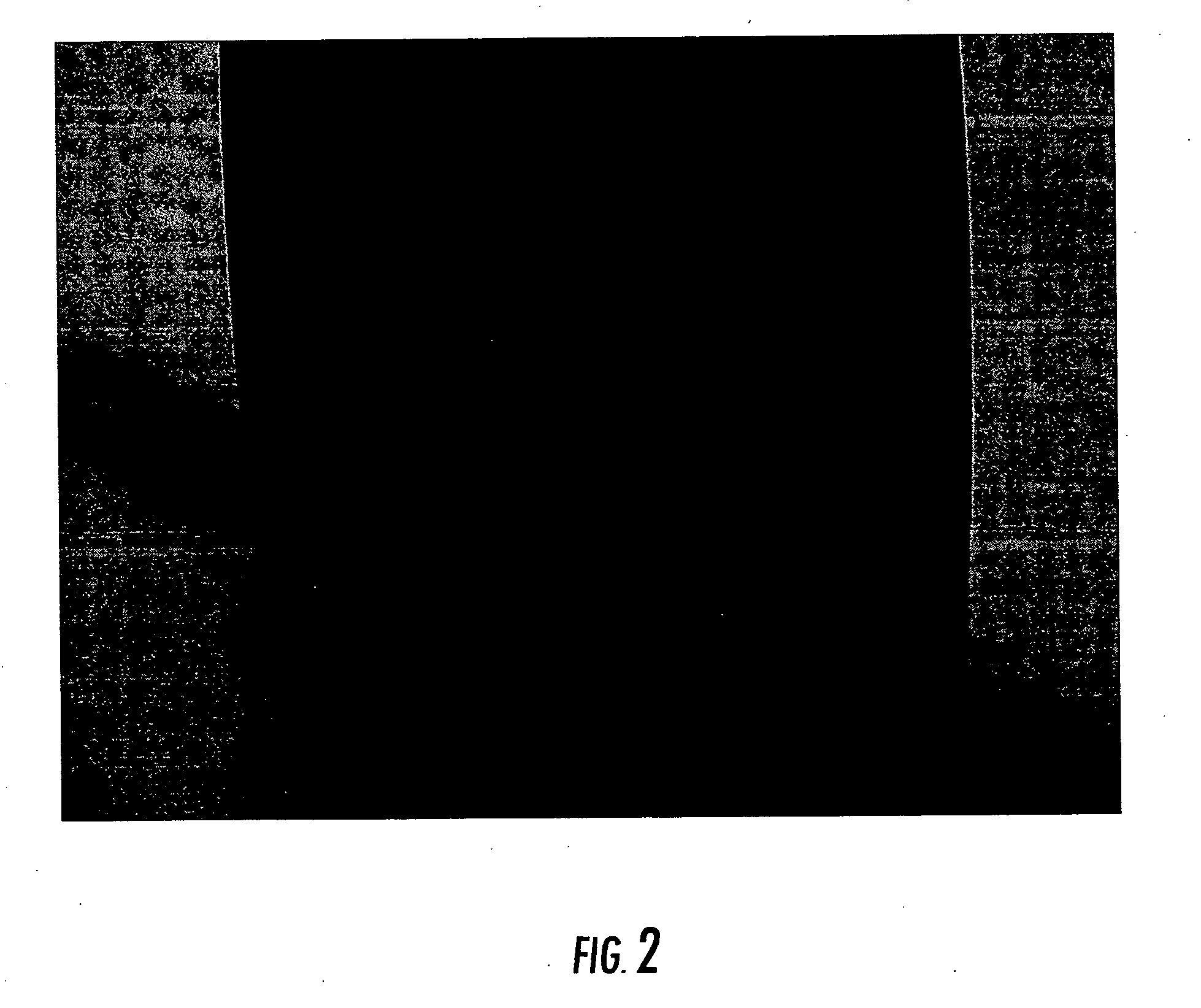Surface conditioner for powder coating systems
a technology of surface conditioner and powder coating, which is applied in the direction of electrically conductive paints, non-metal conductors, conductors, etc., can solve the problems of affecting the scrap rate of paint and/or decals, requiring reworking of the substrate surface, and aggressive attack by known solvent blends on the paint and/or decals
- Summary
- Abstract
- Description
- Claims
- Application Information
AI Technical Summary
Benefits of technology
Problems solved by technology
Method used
Image
Examples
example 1
[0064] A motorcycle fender was painted with primer and basecoat. A long scratch down to bare metal was put onto the fender and the fender was wiped with a commercial solvent blend on a POLYNIT wipe. The solvent blend contained greater than 60% wt. naphtha, petroleum, and light aliphatic naphtha, about 10-30% wt. isopropyl alcohol, and about 10-30% wt. n-Heptane. The fender was lightly sprayed with a powder paint “PBS6-9018, AUM Modified Black Low Cure” from Sherwin Williams. With the light coating it was possible to see areas of the fender that repelled the electrostatically applied black powder coating. Several areas of the fender would not allow powder to coat the surface of the painted fender as shown in FIGS. 1-3.
example 2
[0065] After blowing off the powder paint from the fender from Example 1, a blend comprising about 45% by weight n-heptane, about 49.5% by weight a hydrocarbon blend (e.g., VM&P naphtha), about 5% by weight isopropyl alcohol, and about 0.5% by weight alkoxylated benzyl alcohol ethoxylated with an average of 4 moles of ethylene oxide per 1 mole of benzyl alcohol was applied to the fender. The fender was sprayed lightly with power coating. After one light coating of powder paint, the fender was evenly covered with the powder coating including the scratched area. There was no area on the surface that resisted powder coating as shown in FIGS. 4-7.
example 3
[0066] A blend comprising about 45% by weight heptane, about 49% by weight a hydrocarbon blend (e.g., VM&P naphtha), about 5% by weight isopropyl alcohol, and about 1% by weight alkoxylated benzyl alcohol ethoxylated with an average of 4 moles of ethylene oxide per 1 mole of benzyl alcohol and a blend comprising about 43% by weight heptane, about 47.5% by weight a hydrocarbon blend (e.g., VM&P naphtha), about 7% by weight isopropyl alcohol, and about 2.5% by weight alkoxylated benzyl alcohol ethoxylated with an average of 4 moles of ethylene oxide per 1 mole of benzyl alcohol were applied to phophatized panels that were subsequently coated with powder coating. The powder paint adhered to the panels.
PUM
| Property | Measurement | Unit |
|---|---|---|
| Temperature | aaaaa | aaaaa |
| Fraction | aaaaa | aaaaa |
| Fraction | aaaaa | aaaaa |
Abstract
Description
Claims
Application Information
 Login to View More
Login to View More - R&D
- Intellectual Property
- Life Sciences
- Materials
- Tech Scout
- Unparalleled Data Quality
- Higher Quality Content
- 60% Fewer Hallucinations
Browse by: Latest US Patents, China's latest patents, Technical Efficacy Thesaurus, Application Domain, Technology Topic, Popular Technical Reports.
© 2025 PatSnap. All rights reserved.Legal|Privacy policy|Modern Slavery Act Transparency Statement|Sitemap|About US| Contact US: help@patsnap.com



